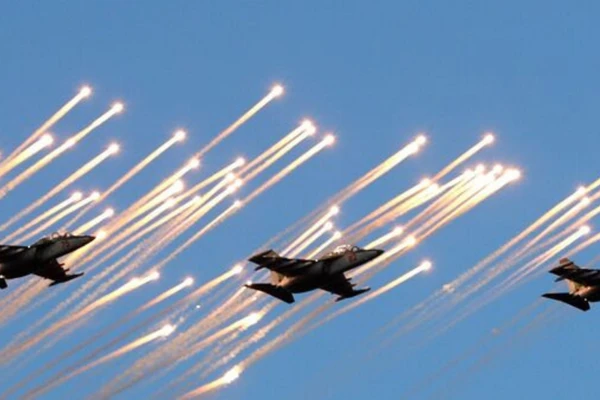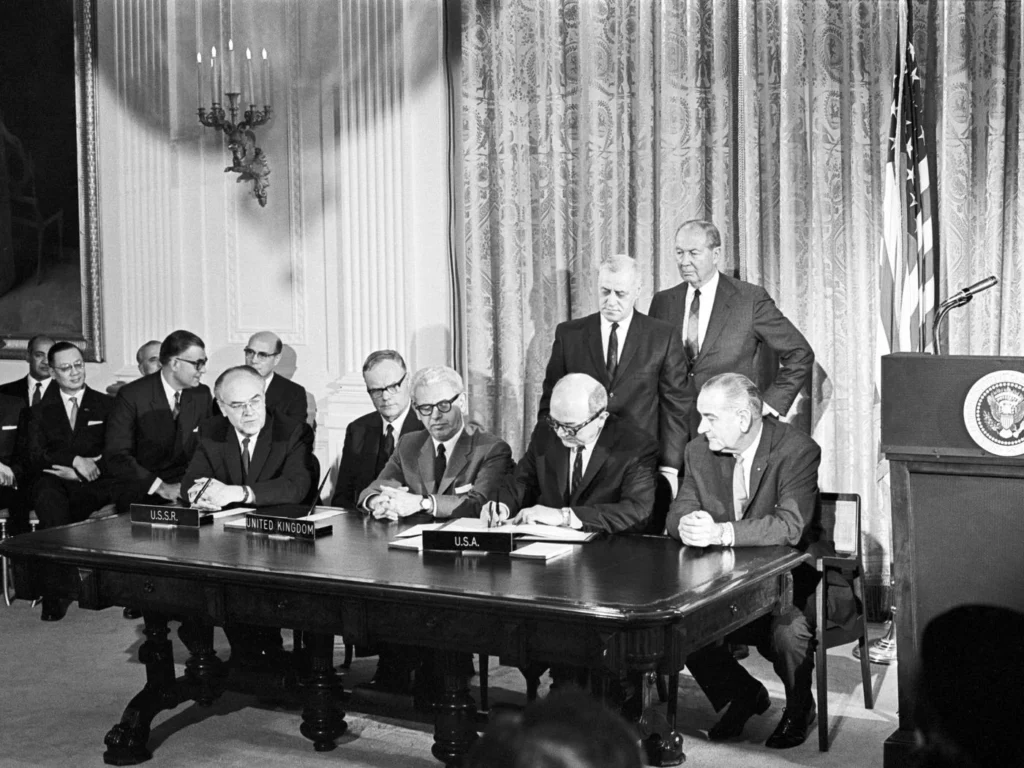: Nuclear Weapons in Space resolution, proposed by the US and Japan to prevent an arms race in outer space, was vetoed by Russia at the UN.
About the draft resolution:
- The resolution, proposed by the United States and Japan, mandates active contribution by all States, especially those with significant space capabilities, to the peaceful use of outer space and the prevention of an arms race in space.
- It highlights a shared interest in the peaceful exploration and utilization of outer space.
- It reaffirms the goal of preventing an arms race in outer space and stresses the obligations under the 1967 Outer Space Treaty.
- The resolution prohibits the placement of objects carrying nuclear weapons or other weapons of mass destruction in orbit around the Earth.
- Calls for UN Member States to avoid developing nuclear weapons or other WMDs intended for orbital deployment.
What is space weaponization?
- Space weaponization involves developing and deploying weapons in orbit, including devices with destructive capacities.
- Utilizes space-based platforms like satellites and space stations for offensive or defensive weapon systems.
- Includes ground-based systems targeting space assets, although these aren’t in orbit.
- Components of space weaponization:
- Missile systems (e.g., Anti-Satellite Missiles, Ballistic missiles).
- Dual-use technologies (e.g., satellites, GPS) serving civilian and military purposes.
- Space debris, potentially weaponized, resulting from and contributing to space weaponization.
- Space-based assets supporting military functions (communications, surveillance, reconnaissance).
Outer Space Treaty of 1967:
- The UN General Assembly adopted the Outer Space Treaty, formally known as the Treaty on Principles Governing the Activities of States in the Exploration and Use of Outer Space, including the Moon and Other Celestial Bodies, in 1967.
- The treaty is a multilateral agreement that forms the basis of international space law.
- Originating during the peak of the Cold War, this treaty was notably idealistic and forward-thinking considering the circumstances of its creation.
- The Outer Space Treaty outlines several fundamental principles regarding the conduct of states and private entities in space. Key provisions include:
- “Province of all mankind” (Article 1) asserts that space exploration is open to all nations without discrimination.
- “Sovereignty” (Article 2) stipulates that outer space and celestial bodies are not subject to any claims of sovereignty.
- “No Nuclear weapons or WMDs in outer space” (Article 3) prohibits the placement of nuclear weapons or any other weapons of mass destruction in space, as well as the establishment of military bases.
- “Peaceful Purposes” (Articles 3 and 4) mandates that all activities in outer space and celestial bodies must be conducted for peaceful purposes, promoting international peace, security, cooperation, and understanding.
- India signed the Outer Space Treaty (OST) in 1967, but the Indian Parliament did not ratify it until 1982.
Other international treaties/resolutions for peaceful use of outer space:
- Rescue Agreement of 1968.
- Space Liability Convention of 1972.
- Registration Convention of 1975.
- Moon Treaty of 1979.
- UN Resolution on Prevention of an Arms Race in Outer Space (PAROS).
Ref:Source
| UPSC IAS Preparation Resources | |
| Current Affairs Analysis | Topperspedia |
| GS Shots | Simply Explained |
| Daily Flash Cards | Daily Quiz |



